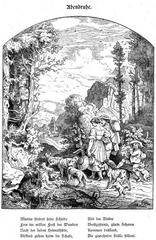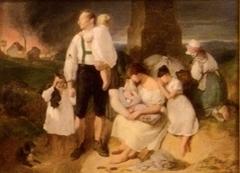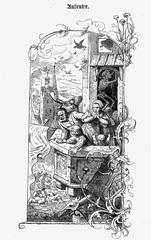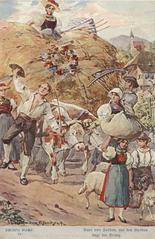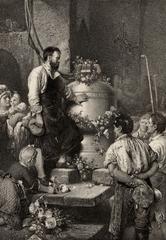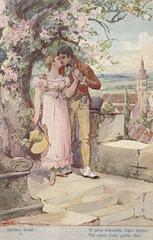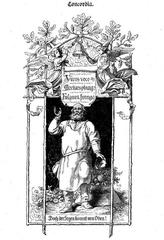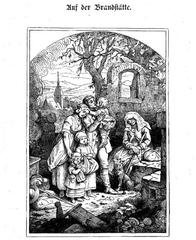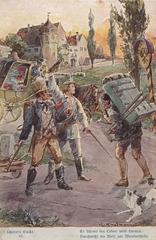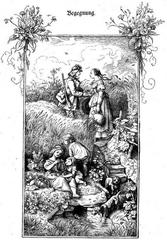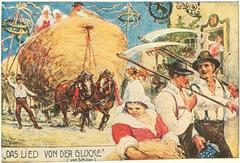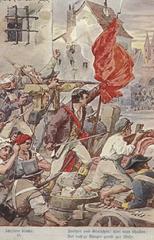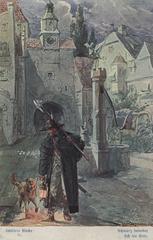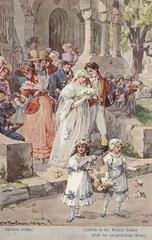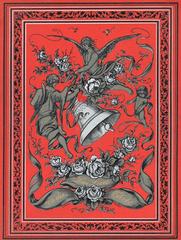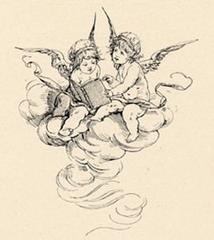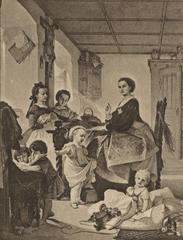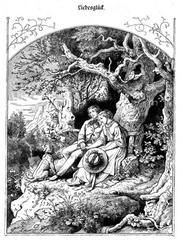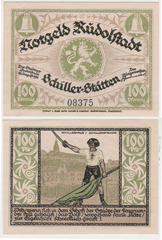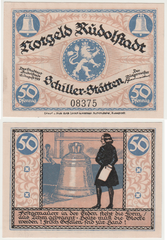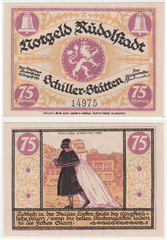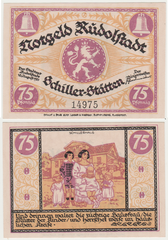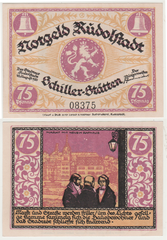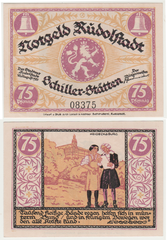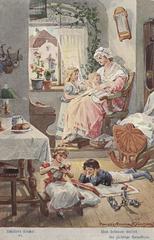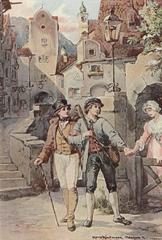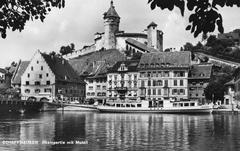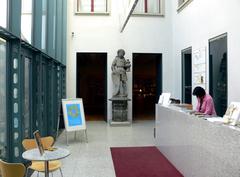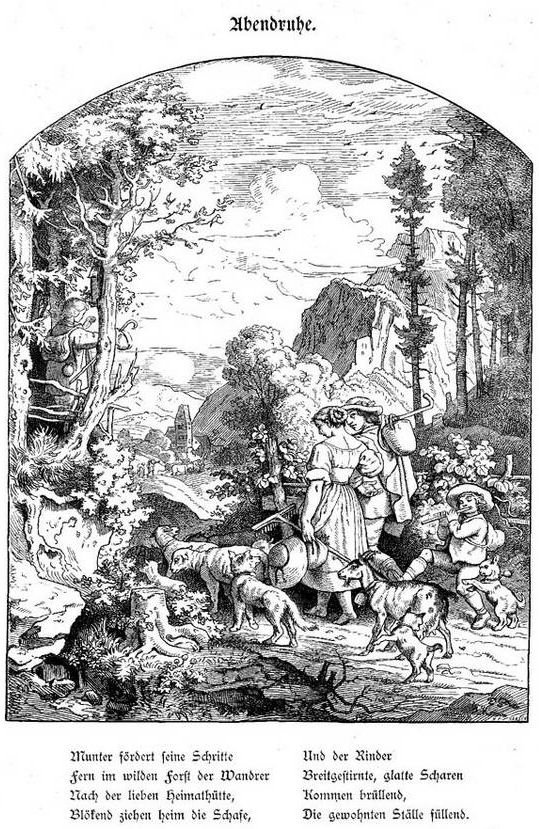
Song of the Bell (Schillerglocke): Visiting Hours, Tickets, and Guide in Schaffhausen, Switzerland
Date: 14/06/2025
Introduction: The Schillerglocke—A Resonant Legacy
In the historic city of Schaffhausen, Switzerland, the Schillerglocke (“Schiller Bell”) stands as a remarkable testament to medieval craftsmanship, civic tradition, and poetic inspiration. Cast in 1486, this monumental 4.5-tonne bell once rang from the tower of the Münster (All Saints’ Cathedral), summoning citizens for worship, marking solemn occasions, and symbolically shielding the city from storms. Its Latin inscription, “vivos voco, mortuos plango, fulgura frango” (“I call the living, mourn the dead, break the lightning”), encapsulates the bell’s multifaceted role in Schaffhausen’s life (schaffhauserland.ch; ciceri.ch).
The Schillerglocke’s influence extends beyond its sound: It inspired Friedrich Schiller’s celebrated 1799 poem “Das Lied der Glocke” (“The Song of the Bell”), connecting Schaffhausen’s heritage with European literature. Today, the bell is preserved in the Kräutergarten (herb garden) beside the Museum zu Allerheiligen and the Münster, accessible year-round and free to the public. Visitors can discover its history through interpretive signage and guided tours, all within a tranquil, accessible setting (myswitzerland.com; explorial.com).
Complementing the Schillerglocke is the living tradition of the Song of the Bell at Schaffhausen’s Munot Fortress, where the daily ringing at 9 p.m. by the Munot guard has echoed since the 16th century. This ritual, part of Switzerland’s intangible cultural heritage, is open to all and provides a powerful, sensory link to the city’s past (myswitzerland.com; Federal Office of Culture).
This guide covers everything you need for an enriching visit: historical context, practical visitor information (hours, tickets, accessibility), nearby attractions, and travel tips for experiencing the enduring resonance of the Schillerglocke and the Song of the Bell.
Table of Contents
- Introduction: The Schillerglocke—A Resonant Legacy
- Origins and Casting of the Schillerglocke
- The Bell’s Role in Civic and Religious Life
- Schiller’s Inspiration: “Das Lied der Glocke”
- Physical Features and Historical Highlights
- Visiting Information: Hours, Tickets, Accessibility, and Tours
- Nearby Attractions and Suggested Itineraries
- The Song of the Bell Tradition at Munot Fortress
- Cultural Significance and Living Heritage
- Visitor Experience and Interpretation
- FAQs
- Visuals and Media
- Sources and Further Reading
Origins and Casting of the Schillerglocke
Cast in 1486, the Schillerglocke was the largest bell in the Münster’s tower, a technical feat for its time. Its Latin inscription—“vivos voco, mortuos plango, fulgura frango”—reflects the bell’s multifaceted role: calling the faithful, mourning the dead, and symbolically “breaking” storms (schaffhauserland.ch; ciceri.ch). The bell’s enduring resonance is a testament to the skilled medieval founders.
The Bell’s Role in Schaffhausen’s Civic and Religious Life
For over four centuries, the Schillerglocke was central to Schaffhausen’s daily rhythm—marking hours, summoning worshippers, and signaling emergencies. Until 1895, it was the Münster’s largest and most vital bell, its sound woven into the city’s communal identity (schaffhauserland.ch).
Schiller’s Inspiration: “Das Lied der Glocke”
Although Friedrich Schiller never visited Schaffhausen, the Schillerglocke’s inscription inspired his renowned 1799 poem “Das Lied der Glocke,” which likens the process of bell-founding to the cycles of human life. The poem elevated the bell to a symbol of human endeavor and community, cementing its cultural importance (ciceri.ch; wikipedia.org).
Physical Features and Historical Highlights
Weighing 4.5 tonnes, the Schillerglocke is one of Switzerland’s heaviest bells. It features Gothic inscriptions and city coats of arms. In 1706, a 30-kg piece broke from its rim, yet the bell continued in use until 1895. Today, it is displayed in the Kräutergarten, preserved as a monument and accessible to the public (naturpark-schaffhausen.ch; myswitzerland.com).
Visiting Information: Hours, Tickets, Accessibility, and Tours
Location
The Schillerglocke is located in the Kräutergarten, next to the Museum zu Allerheiligen and the Münster in central Schaffhausen—an area easy to reach on foot from the train station (explorial.com).
Visiting Hours
- Kräutergarten: Open daily, generally from 8:00 AM to 6:00 PM (may vary seasonally).
- Outdoor Access: The bell and garden are accessible during daylight; for visitor safety and best experience, visits are recommended in these hours (explorial.com).
Tickets
- Kräutergarten and Schillerglocke: Free admission.
- Museum zu Allerheiligen: Modest entry fee for additional exhibits on local history and the bell.
Accessibility
- Garden: Wheelchair accessible with paved paths.
- Museum: Mostly accessible; some cobblestone areas may pose challenges—contact the museum for specific needs.
Guided Tours
Guided tours focusing on the Schillerglocke, bell-making, and Schiller’s legacy are available through the museum and local operators. Booking ahead is recommended in peak seasons (nordagenda.ch).
Nearby Attractions and Suggested Itineraries
- Münsterkirche (All Saints’ Cathedral): Explore the Gothic cathedral, the bell’s original home.
- Museum zu Allerheiligen: Discover artifacts and exhibitions on Schaffhausen’s history.
- Munot Fortress: Climb this circular 16th-century fortress for city and Rhine views, and experience the Song of the Bell tradition at 9 p.m.
- Old Town: Wander medieval streets lined with oriel windows and fountains.
- Rhine Falls: Europe’s largest waterfall, easily reached from Schaffhausen (arzotravels.com; cheerfultrails.com).
The Song of the Bell Tradition at Munot Fortress
Historical Context
The Munot Fortress bell, rung daily at 9 p.m. by the Munot guard, is a living tradition dating to the 16th century. This event, open to all, connects today’s Schaffhausen with its medieval past—part of Switzerland’s officially recognized intangible cultural heritage (Federal Office of Culture).
Visitor Information
- Bell Ceremony: Every evening at 9 p.m., free to attend.
- Guided Tours: Daytime fortress tours available; check for availability and language options.
- Access: Short walk from Old Town; stairs and cobblestones require sturdy footwear.
- Festivals: Bell ringing features in local festivals and ceremonies (Schaffhausen Festivals).
Cultural Significance and Living Heritage
The Schillerglocke and the Song of the Bell represent the enduring identity and communal spirit of Schaffhausen. Bells historically signaled protection, celebration, and unity. Today, they symbolize continuity, resilience, and the living bond between past and present (Living Traditions Inventory).
Visitor Experience and Interpretation
Interpretive panels, museum exhibits, and guided tours deepen understanding of the Schillerglocke’s craftsmanship, history, and literary significance. The Kräutergarten’s sensory setting and educational signage about medicinal plants enrich the visit. For those interested in music, the bell’s connection to Swiss folk traditions offers further exploration (Swiss Folk Music).
Frequently Asked Questions (FAQs)
Q: What are the Schillerglocke’s visiting hours?
A: The Kräutergarten is generally open from 8:00 AM to 6:00 PM, but confirm on the official tourism site for seasonal updates.
Q: Is there a ticket fee?
A: No; visiting the bell in the garden is free. Museum entry requires a modest fee.
Q: Is the site wheelchair accessible?
A: Yes, the garden has paved, wheelchair-friendly paths.
Q: Are guided tours available?
A: Yes, bookable through the museum or local tour operators.
Q: What is the Song of the Bell ceremony?
A: It’s a daily bell ringing ritual at 9 p.m. at the Munot Fortress, free for all.
Q: What else can I see nearby?
A: The Münsterkirche, Museum zu Allerheiligen, Munot Fortress, Rhine Falls, and Schaffhausen Old Town.
Visuals and Media
- High-quality images of the Schillerglocke, Kräutergarten, and Museum zu Allerheiligen
- Photos of the Munot Fortress and the Song of the Bell ceremony
- Interactive maps of Schaffhausen’s historical sites
- Alt tags for SEO: “Schillerglocke bell in Kräutergarten Schaffhausen,” “Munot Fortress bell ringing tradition,” “Museum zu Allerheiligen entrance”
Sources and Further Reading
- Schaffhauserland.ch – Did You Know?
- Ciceri.ch – Schillerglocke
- MySwitzerland.com – Schillerglocke
- Federal Office of Culture – Living Traditions
- MySwitzerland.com – Schaffhausen
- Explorial.com – Schillerglocke & Kräutergarten
- Trip101.com – Things to Do in Schaffhausen
- Arzotravels.com – Things to Do in Schaffhausen
- Cheerfultrails.com – Things to Do in Schaffhausen
- Wikipedia – Song of the Bell
- Nordagenda.ch – Glocken, Schiller und das Münster
- Living Traditions in Switzerland
- Swiss Folk Music
Plan Your Visit and Stay Connected
Prepare for an unforgettable journey through Swiss history and culture. Download the Audiala app for audio tours and the latest updates, and follow official tourism channels for event news. Combine your visit with neighboring attractions for a comprehensive experience—and immerse yourself in the resonant legacy of Schaffhausen’s bells.
